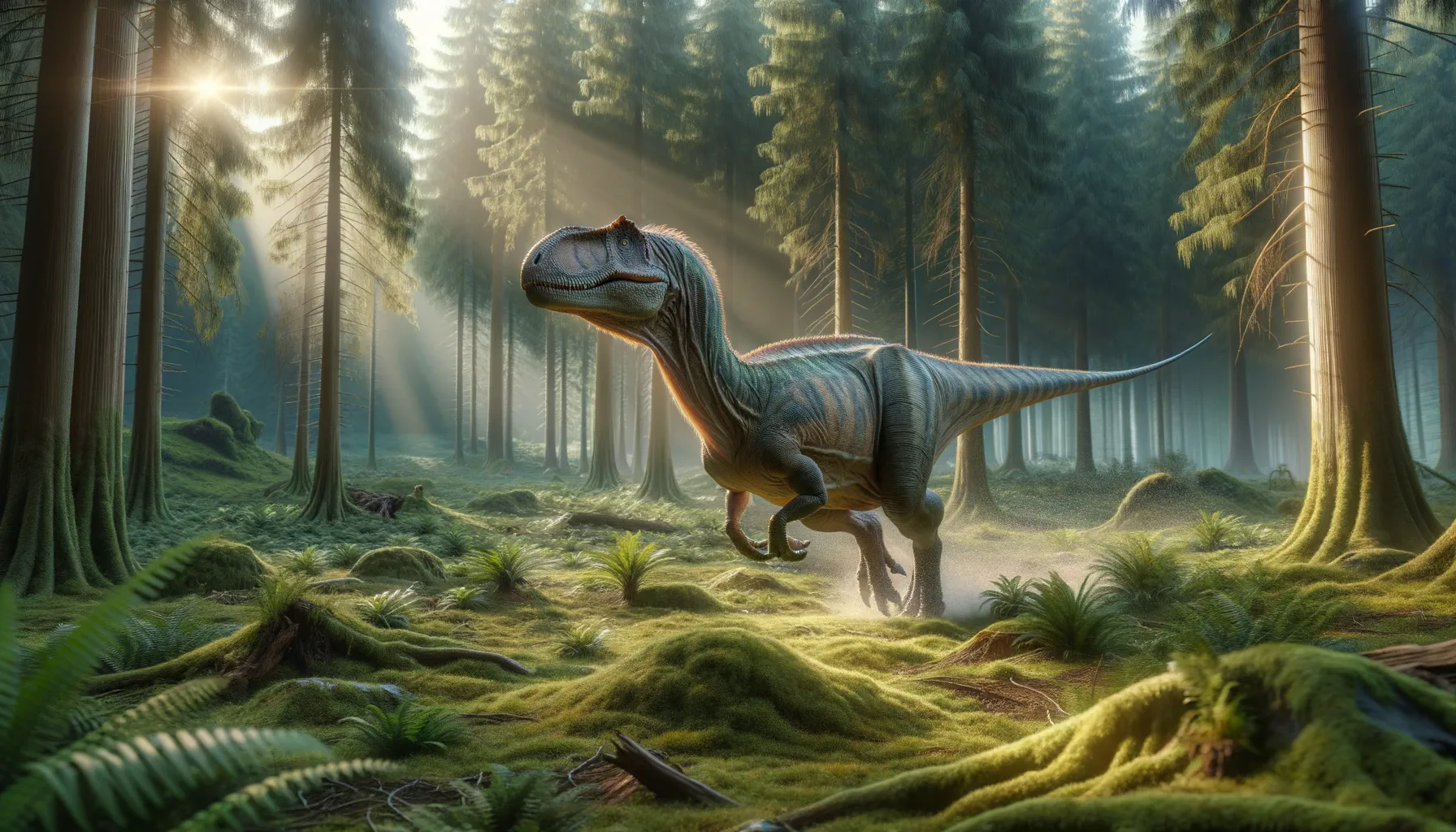
Dollodon
Swift and sleek, a Cretaceous wonder.
Period
Cretaceous
Length
Around 6 meters long.
Height
About 2 meters tall at the hips.
Weight
Approximately 500 to 1000 kg.
Dollodon was a medium-sized herbivorous dinosaur known for its strong hind limbs and swift movement. Living during the Cretaceous period, it roamed the forests and plains, using its speed and agility to evade predators. Its fossils were first discovered in Belgium, offering a glimpse into the varied and dynamic dinosaur ecosystems of Europe.
Diet
As a herbivore, Dollodon primarily fed on a variety of plants. It likely consumed low-lying vegetation and possibly some shrubs and leaves. Its beak and teeth were well-suited for cropping and chewing plant material.
Hunting
Dollodon's hunting behavior doesn't apply as it was a herbivore. Instead, it probably foraged for food in open areas where vegetation was abundant. Its agile build suggests it was well-adapted to avoid predators rather than hunt.
Environmental challenges
Dollodon faced environmental challenges typical of its time, such as climate fluctuations and competition for resources. Its habitat was likely subject to changing weather patterns, affecting food availability. Predation pressure from carnivorous dinosaurs also posed a significant threat, driving its need for speed and vigilance.
Speed
Moderate, capable of quick sprints.
Lifespan
Estimated around 20-30 years.
First discovery
First discovered in Belgium by Louis Dollo.
Fun Facts
- Dollodon was a plant-eating dinosaur that lived during the early Cretaceous period, around 125 million years ago.
- It belonged to a group of dinosaurs known as Iguanodonts, which were known for their thumb spikes.
- Dollodon was named after the famous Belgian paleontologist Louis Dollo.
- This dinosaur walked on two legs, but it could also use all fours when needed.
- Fossils of Dollodon were first discovered in Belgium in the late 19th century.
- Dollodon was relatively small compared to other Iguanodonts, estimated to be about 6 meters long.
- Its teeth were well-suited for chewing through tough plant material in its forested environment.
Growth and Development
Dollodon likely grew rapidly during its early years to reach a size safe from smaller predators. As it matured, its growth rate would have slowed, focusing on maintaining strength and speed. The development of its limbs was crucial for its survival strategy, enabling quick escapes from danger.
Habitat
Dollodon inhabited richly vegetated areas, such as forests and plains. It thrived in regions where plant life was abundant and water sources were accessible. This habitat provided both food and cover from predators, essential for its survival.
Interaction with other species
Dollodon likely interacted with other herbivores and shared resources peacefully. Its speed reduced competition by allowing it to access different areas quickly. Predatory species, however, posed a constant threat, influencing its social behavior and group dynamics to ensure safety in numbers.
Natural lifespan
Dollodon's natural lifespan was around 20-30 years in the wild.
Reproduction
Dollodon likely reproduced by laying eggs in nests constructed on the ground. Parental care, if present, might have involved guarding the nest from predators. Hatchlings would need rapid growth to rely on speed for survival among older and larger predators.
Social behaviour
Dollodon may have lived in small herds or family groups for protection. Group living provided safety in numbers, alerting each other to danger. Social behaviors might have included vocal calls or physical gestures to communicate threats or maintain group cohesion.
Fossil locations
Dollodon's fossils have been primarily found in Belgium. These discoveries shed light on its distribution across Europe during the Cretaceous period. The fossil sites offer valuable insights into the ancient ecosystems where Dollodon thrived.
